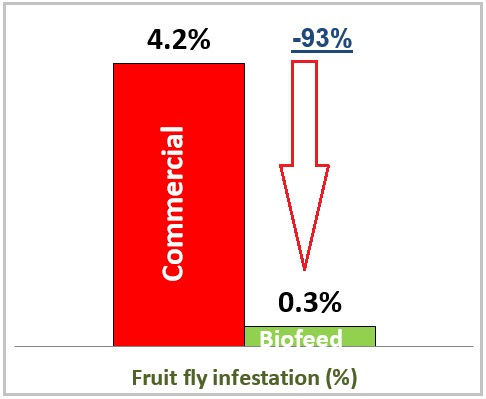CAN YOU DISTINGUISH “A GOOD STORY” FROM “A SCIENTIFIC TRUTH”?

BY DR. NIMROD
Wherever I travel, I often hear the same stories about one product or another doing a marvelous job (almost a miracle) in controlling or eliminating a pest/disease.
The “storytellers” are always deeply convinced in their stories, even when the reality does not support their arguments or contradict it, e.g., allegedly a highly effective crop protection product while field results show high infestation.
When I face such cases, I am supposed and expected to confront the “storyteller” with some questions about how he explains the “success” versus the harsh reality. But I don’t do it.
Instead, I say to myself, “Leave him alone and let him believe it if it makes him feel good. I know the reality is different, but I will save myself the time of arguing by not confronting. After all (I convince myself), this allegedly “success story” is harmless.” And…. I keep silent.
When a “storyteller” doesn’t confront his “story” with reality, it is not a big deal if he is considered a “simple person”. But what happens when a “storyteller” is in decision-making or a position defining and influencing farmers’ future?
THE ABUSE OF POWER
Here I share three stories of cases where people used excess power to advance a non-relevant agenda, such as politics, ideology, or business, into the affairs of science and mainly against the public interest.
STORY 1 – “A NEW GENETICS” (TERM: LYSENKOISM)
In 1940, in the political storms that ravaged the Soviet Union following the death of Lenin, Mr. Trofim Denisovich Lysenko became director of the Institute of Genetics within the CCCP (USSR’s) Academy of Sciences. He used his political influence and power to advance his ideas that all organisms, given the proper conditions, have the capacity to be or do anything. This had certain attractive parallels with the social philosophies of Karl Marx that promoted the idea that man was largely a product of his own will.
Lysenko brutally suppressed dissenting opinions and discredit, marginalize, and imprison his critics, elevating his anti-Mendelian theories to state-sanctioned doctrine. Soviet scientists who refused to renounce genetics were dismissed from their posts and left destitute. Hundreds if not thousands of others were imprisoned, and several were sentenced to death as enemies of the state.
RESULT
Lysenko’s actions and practices contributed to the famines that killed millions of Soviet people; the adoption of his methods from 1958 in the People’s Republic of China had similarly disastrous results, culminating in the Great Chinese Famine of 1959 to 1962.
STORY 2 – “A NEW BIOLOGICAL CONTROL”
In one country, the one and single Institute of Biological Control (IBC) received, somewhere in the 1950s, the responsibility of controlling fruit flies in that countries’ citrus orchards. Today, 90% of the IBC’s income is related to fruit fly spraying, AND it is responsible for more pesticide sprays than any other organization in that country.
RESULT
Any other fruit fly solution, including non-spraying, e.g., traps, needs permission from the IBC. Needless to say that such “permission” is rarely granted.
STORY 3 – “A NEW ECO-FRIENDLY CONTROL”
In one country, the managing team of an SIT (Sterile Insect Technique) project decided to present a showcase of eradication. To have better chances of success, they chose a region with orchards that are rarely sprayed for fruit flies and where the infestation is very low.
They asked the farmers to stop what they do and instead started releasing sterile fruit flies. Simultaneously, they began to apply “biological bait” for the control of the flies. Years passed, the flies were not eradicated, and the sprays increased in numbers until they were many folds more than the starting point.
RESULT
Fruit flies were not eradicated, their infestation remained about the same, but secondary pests became a significant problem, as sprays killed their natural enemies. It took many more years, millions of $ and repeated complaints of farmers before this project ended.
CONCLUSION
All you need is a healthy common-sense and a bit historical perspective to know that the above examples result from over-exercising power or authority in a wrong and damaging way.
It shouldn’t surprise anyone that none of the above-involved people thought they were doing wrong when it took place. They were profoundly convinced and confident in the righteousness of their way. They turned a blind eye to see the reality while becoming believers and prisoners of their own story.
Do you spot in your close environment “storytellers”? What do they advance, and how is it opposing the public good?
BE CRITICAL!
As scientists and people who wish to see continuous improvement, we must strive to keep our minds open to the option that we are wrong. We need to be alert to the possibility that people, even if regarded as “experts” and have all good intentions, still can be wrong and harm their environment.
In fact, in a TED presentation, Paul Roulkins explains that not only the experts are wrong, but “Why the majority is always wrong”.
Following, I propose three tools we can use to protect us from being wrong ourselves or from being misled by others.
(1) Many scientists, heads of departments, etc., remain in the same office and responsibilities for many years. That could become a particular source for potential stagnation and problems.
Although Lord John Emerich Edward Dalberg-Acton words’ were directed to politicians, they are valid to anyone, “Power tends to corrupt, and absolute power corrupts absolutely.”
While “excess power” and “corruption” are part of the problem, other factors are psychological reasons. This is when you are deeply convinced that “scientifically” your “product” or “solution” is THE best. As it may be the case, it is more often not so, and the cost that accompanies such an ongoing mistake is enormous.
(2) Koch’s four postulates – four criteria designed to establish a causative relationship between a microbe and a disease. This method can be helpful in many cases to determine the relationship between cause and effect.
(3) Relative effectiveness – the third “tool” is a scientific method that helps us comparing and determining the quality of different pest control solutions. This is relevant for those who want to test the relative effectiveness of several products to control a specific pest, e.g., fruit fly, and wishes to know which brings the best value (result) for money and which less. We would run a relative comparison in such a case, where the result will be the “percent of damage reduction”.
As scientists, we shouldn’t be too confident about anything. We must adopt a critical approach towards issues in which we are involved for a long time but do not bring the desired or expected results.
We can do it by testing the effectiveness of different treatments, each separately, in an environment where we would expect high damage (e.g., 100%) unless the treatment is effective. Hence we can contribute any improvement, i.e., less damage, to the applied treatment. The results of all tests would present the ratio that each treatment reduced the damage and the relative effectiveness of the treatments. When we use the same treatment in different places, we can expect the damage rate to change. In contrast, the ratio of damage and relative effectiveness of the treatment should be kept anywhere with similar conditions regardless of the population’s size.
HOW DO WE DO IT!?
From the very beginning of Biofeed, we were looking for a solution that would replace sprays. That is, to be, under all conditions, as good as or even better than spraying or any other solution.
I didn’t want to miss-lead or fool myself, so I made sure that we will run our experiments in places known for high infestation (while using other solutions), with the most sensitive crops, where the fruit fly population is high.
By acting this way, we had farmers that were glad working with us (because previous solutions did not bring them the desired high-quality results), and it was effortless for us to compare our results to those of others.
If you take the most common fruit fly, e.g., Ceratitis capitata, Medfly, control methods and you study their effectiveness, each separately, under conditions of high population, you may find the following order of efficiency–
Cover sprays – 96% reduction of infestation (4% infestation).
Bait sprays – 95% reduction of infestation (5% infestation).
Traps – 70% reduction of infestation (30% infestation).
SIT – 40% reduction of infestation (60% infestation).
Those rates of successful control and the relative order of efficacy remain the same no matter where you are and the number of Medflies in your orchard or environment.
Do the same thing, but with other fruit flies, say, Bactrocera oleae, Bactrocera dorsalis, etc. The absolute level of efficacy may change but most often not the relative effectiveness of the solutions.
Now let’s look at the results achieved, in the same conditions, by Biofeed.

| EXCELLENCE LEADS TO ACHIEVEMENTSWe saw that already over ten years ago, Biofeed’s technology managed to present improved performance greater than one scale of magnitude compared to any other fruit fly control technology.Note, that due to the low efficacy of the SIT method, it didn’t take part in the survey.As Biofeed developed solutions to additional fruit flies, e.g., Bactrocera dorsalis, B. zonata and C. cosyra, the relative effectiveness versus other solutions remained the same or even grew greater, while infestation rate in Biofeed treated orchards continuously become smaller and smaller.Remember, relative effectiveness is the result of ecological and biological factors and hence is fixed. The things that are changing are the non-biological ones, such as, cost per hectare of the control or eradication, the environmental impact, labor needed to apply, safety for users and environment, frequency of application.From the above reasons, it is evident that just like FreeDome is the most suitable tool for controlling fruit flies, it is also the most ideal for their eradication wherever one would like.Oh, you ask, “how come fruit fly Control and fruit fly Eradication are related?”On a continuum of pest management quality, ranging from 0% control to 100% pest control, eradication is the extreme condition of 100% pest control.Accordingly, a product used to eradicate a pest should also work well for desired control levels lower than 100%, i.e., “regular control”, while the opposite is not valid. Do you think that a product or solution that is little effective in controlling fruit flies can be all of a sudden highly effective in their eradication? |
| Please, if you found value in this article, it would mean a lot to me if you send me a comment and share it with your friends. |
